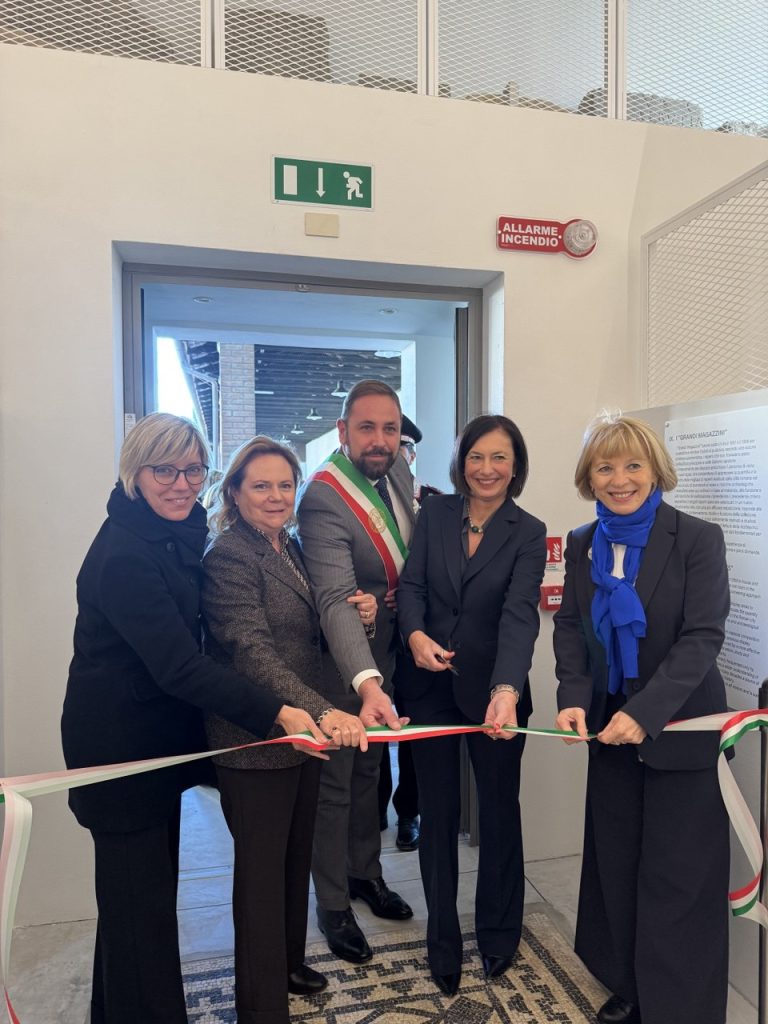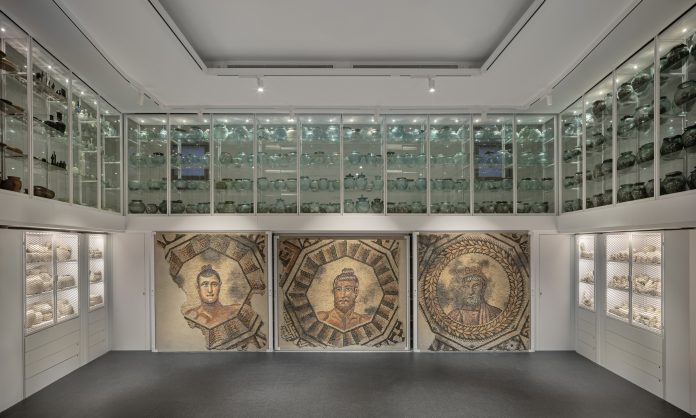by InTrieste
In a major unveiling today, the National Archaeological Museum of Aquileia opened newly renovated depositories, providing the public with unprecedented access to artifacts from one of the Roman Empire’s most important ancient cities. Under the stewardship of the Regional Directorate of Friuli Venezia Giulia’s National Museums and its director, Dr. Andreina Contessa, along with Dr. Marta Novello, director of the Aquileia Archaeological Museum, this project represents a crucial step in a comprehensive restoration and expansion effort aimed at reimagining the visitor experience.

The new depositories, typically reserved for researchers and archaeologists, now serve as an integral part of the museum’s tour circuit, offering visitors a unique window into Italy’s ancient past. “Opening these traditionally private spaces to the public provides an unprecedented opportunity to delve into Aquileia’s rich history,” Dr. Contessa explained. “In the Roman era, Aquileia was a cosmopolitan hub—a meeting place of Mediterranean cultures and a center of commerce. We want every visitor to feel that sense of cultural exchange.”
The museum’s expanded collection is a testament to its rich heritage, with over 5,000 pieces on display, including stone inscriptions, votive altars, funerary monuments, and sculptures. Glass, metal, and ceramic artifacts—some dating back two millennia—are accessible through protective, glass-fronted drawers, giving visitors a close-up look at items not previously displayed.

The Aquileia Archaeological Museum has undergone a sweeping transformation in recent years, reimagining the visitor experience with an updated display approach that prioritizes accessibility, modern storytelling techniques, and immersive engagement. Originally established in 1882 under the Austro-Hungarian Empire, the museum has consistently adapted to new methods in archaeological preservation and public education. Its 2018 redesign of the Villa Cassis, a historic building housing many of the museum’s core collections, marked the beginning of this new chapter, followed by the debut of the “Luxury and Wealth” section in 2021. Now, with the opening of the new depositories, the museum continues this trajectory, aiming to make Aquileia’s UNESCO World Heritage site accessible to a broader audience.
The project was made possible through Italy’s “Great Cultural Projects” initiative, with substantial support from the Ministry of Culture. The architectural renovation of Aquileia’s “Great Warehouses,” originally built in the 1950s, preserved their unique system of porticoed galleries while modernizing the interiors to meet the demands of contemporary museum standards. The newly opened space includes six interconnected rooms, spanning over 500 square meters. Studio Modland, an Italian architectural firm, designed display structures that address the preservation needs of materials of varied sizes and weights while ensuring a visually appealing and versatile setup.

One of the most striking elements of the redesign is its lighting system, which not only illuminates individual artifacts but can adapt to various scenarios to enhance exhibitions. The design reflects an ambition to accommodate temporary exhibitions and create a flexible museum experience that emphasizes engagement with the artifacts on display.
For Dr. Novello, the head of the Aquileia Archaeological Museum, the depositories are more than just storage spaces. “After years of collaborative work, we’re thrilled to present these new spaces to the public,” she said. “It’s a testament to the dedication of many professionals who brought diverse skills to this project. The result is not only a more organized and accessible collection but also a foundation for new research and interpretation.”
Each display is complemented by interactive educational materials, encouraging visitors to pose questions and suggest interpretations as they move through the galleries. Labels and descriptions prompt visitors to delve deeper, approaching the collection from fresh perspectives. To facilitate greater exploration, the museum has integrated QR codes that connect guests to a digital database containing detailed entries for each artifact, complete with scientific bibliographies. The system also allows remote access for those unable to visit in person.
The new depositories also feature a dedicated educational room, something the museum previously lacked, which opens onto an exhibit of fantastical stone creatures—ancient symbols that add an element of whimsy and intrigue for younger audiences. This inclusively designed space is intended to foster dialogue, exploration, and curiosity, with the goal of making Aquileia’s heritage accessible to all.
Future plans include the unveiling of a maritime section, which will feature a Roman boat discovered near Monfalcone, as well as a complete overhaul of the museum’s Lapidary Galleries.
With today’s inauguration, the National Archaeological Museum of Aquileia has embarked on a new era of public engagement, inviting visitors to step into the footsteps of Roman history and explore relics that remain as dynamic as the questions they provoke.





























